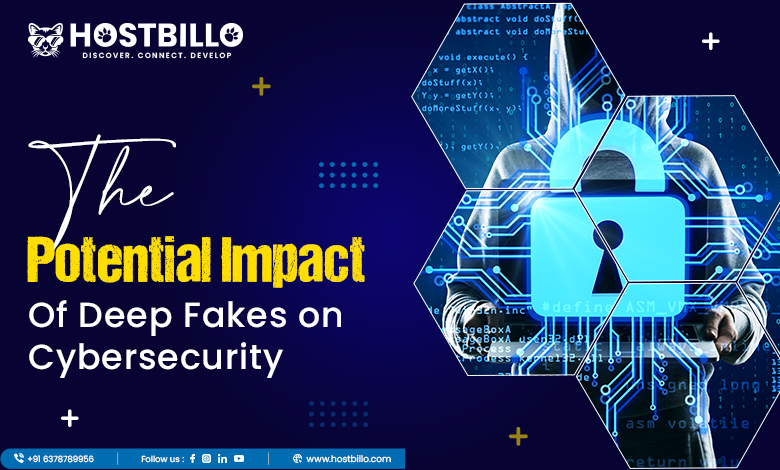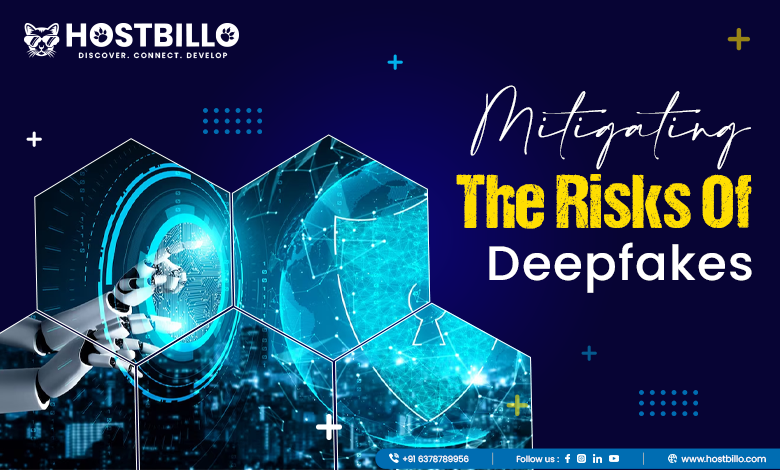The Rise of Deep Fake Technology and its Potential Impact on Cybersecurity

Introduction
Deepfake technology is rapidly reshaping the digital landscape. With progressions in artificial intelligence (AI), constructing hyper-realistic fake audio, video, and images is becoming increasingly accessible. These innovations are not limited to entertainment and education but also extend to accessibility and personalized content creation.
However, deep fakes also bring serious challenges, particularly in cybersecurity. They are being used as tools for misinformation, identity theft, blackmail, or other fraud. Cybercriminals employ them in financial scams, such as impersonating executives to authorize payments. This misuse has forced organizations and individuals to reevaluate their strategy to digital protection. The blog delves into these dual facets of deep fake technology, exploring its benefits, its threats, and strategies to mitigate its risks.
Let’s Understand what are Deep fakes?

Deep fakes leverage advanced AI techniques to manipulate multimedia content. They use deep learning models and Generative Adversarial Networks (GANs) to create realistic forgeries. These technologies alter audio, video, and images to make them appear genuine. Here’s how they work and their implications:
Key Features of Deep fakes
- Face Replacement: The technology can smoothly replace the face of one person with another in videos.
- Voice Mimicking: AI can recreate a person’s voice with startling accuracy, replicating tone, pitch, and speech patterns.
- Content Fabrication: Deepfakes can simulate actions, events, or scenarios that never occurred, misleading viewers.
Applications and Concerns
Initially, deep fakes gained popularity in entertainment, where they were used to de-age actors or recreate historical figures. However, they now pose significant risks in:
- Political Propaganda: Fake videos of leaders can spread misinformation.
- Identity Theft: Cybercriminals use deep fakes to impersonate individuals for financial fraud or unauthorized accessibility.
- Corporate Espionage: Fake executive orders or communications compromise organizational security.
Benefits of Deepfake Technology:
Despite their risks, deepfakes offer valuable applications across various domains. Their benefits reflect the dual-edged nature of this innovation:
1. Entertainment and Media
- Deep fakes enhance storytelling by creating lifelike recreations of historical figures.
- They allow actors’ performances to be digitally altered for continuity in films and shows.
- Old footage can be restored, enabling documentaries and archival projects.
2. Education and Training
- Medical Training: Simulated surgeries or patient interactions improve learning experiences for healthcare professionals.
- Defense and Law Enforcement: Realistic training scenarios using deepfakes enhance preparedness for critical situations.
- Customer Service: Companies use deep fakes to model human-like training modules for employees.
3. Accessibility and Inclusion
- Language Adaptation: Deep fakes help create multilingual content, ensuring better reach to global audiences.
- Personalization: AI-driven customization caters to individual needs, such as creating assistive tools for people with disabilities.
- Cultural Preservation: Indigenous languages and traditions can be digitally preserved and shared using deepfake technology.
The potential impact of deep fakes on cybersecurity

Deepfakes are increasingly sophisticated and pose critical threats to cybersecurity. Their realistic forgeries challenge traditional methods of authentication, creating vulnerabilities across multiple domains:
1. Identity Theft
- Criminals use deepfakes to impersonate individuals, gaining unauthorized access to personal accounts and secure systems.
- Fake identification videos or voice recordings can bypass biometric authentication systems.
- Attackers exploit these techniques to steal sensitive data, from financial credentials to private communications.
2. Social Engineering Attacks
- Deep fake audio or video convinces targets that they are communicating with trusted individuals, such as colleagues or superiors.
- Phishing attacks using fake media increase credibility, prompting victims to share confidential information or grant access.
- Sophisticated scams include posing as family members or friends in distress to exploit emotional responses.
3. Disinformation Campaigns
- Fake political speeches or announcements destabilize trust in institutions, governments, and public figures.
- Carefully crafted deep fake videos can spread misinformation during elections or crises, amplifying societal unrest.
- These campaigns manipulate public opinion, influence markets, or cause panic.
4. Financial Fraud
- Criminals use deepfake voices to impersonate executives and authorize fraudulent transactions.
- Attackers mimic customers or vendors to manipulate payment processes in corporate environments.
- Financial losses from such scams are increasing as detection tools lag behind.
5. Damage to Corporate Reputation
- Deep fakes are used to produce fake scandalous content involving company leaders.
- Malicious actors create videos that appear to show unethical practices, damaging brand credibility.
- Rebuilding trust after such attacks requires significant resources and effort.
6. Threat to National Security
- Deepfakes can fabricate evidence, undermining trust in intelligence and surveillance reports.
- Fake announcements or events could provoke international conflicts or disrupt emergency responses.
- Cyber warfare tactics now include deepfake propaganda to destabilize adversaries.
Why Vigilance is Essential
The growing sophistication of deepfakes calls for heightened vigilance and stronger countermeasures:
- AI-Powered Detection: Tools that recognize manipulated content with high accuracy.
- Awareness Campaigns: Educating users about the risks and signs of deepfake media.
- Legal Regulations: Enforcing stricter penalties for malicious use of deepfakes.
- Collaboration Across Sectors: Governments, tech companies, and researchers must operate together to counter deepfake threats.
Mitigating the risks of deepfakes

Addressing the risks posed by deepfakes requires a strategic, multi-pronged approach. No single solution suffices; instead, combining technological, legal, and social measures is essential.
1. Advanced AI Detection Tools
- Develop AI-based solutions that can identify manipulated content with high accuracy.
- Employ ML models trained on datasets of real and fake content to spot deepfake patterns.
- Deploy tools that analyze facial movements, voice inconsistencies, and metadata anomalies.
- Encourage open-source development of detection software to make tools widely accessible.
2. Public Awareness and Education
- Launch awareness campaigns to educate users about deepfakes, their risks, and warning signs.
- Promote digital literacy programs to help individuals critically assess content authenticity.
- Render training for experts in media, law enforcement, and cybersecurity to recognize and respond to deepfake-related threats.
3. Strengthened Legislation
- Introduce specific laws targeting the malicious use of deepfake technology.
- Impose penalties for creating or distributing harmful deepfake content, such as for fraud or defamation.
- Protect individuals and organizations from deepfake-driven identity theft and reputational harm.
- Encourage international cooperation to address cross-border misuse of deepfakes.
4. Enhanced Authentication Techniques
- Employ digital watermarks to confirm the authenticity of multimedia content. These invisible markers can help trace origins.
- Employ blockchain-based tracking systems to secure content and prevent unauthorized manipulation.
- Encourage platforms to adopt multi-factor authentication for uploaded content to ensure its legitimacy.
5. Collaboration Across Sectors
- Governments, tech companies, and academic institutions must collaborate to develop comprehensive countermeasures.
- Share research findings and technological advancements to stay ahead of deepfake innovations.
- Establish industry standards for content verification and deepfake mitigation practices.
6. Monitoring and Reporting Systems
- Build systems that monitor platforms for deepfake content in real time.
- Encourage users to report suspicious media, enabling swift removal or investigation.
- Invest in rapid-response mechanisms to counter the viral spread of harmful deepfakes.
7. Ethical Guidelines for AI Development
- Encourage AI developers to integrate ethical considerations into technology creation.
- Ensure AI advancements do not unintentionally lower the barriers to producing harmful deepfakes.
- Promote the use of AI for positive purposes, such as educational tools and accessibility aids.
8. Platform Accountability
- Social media platforms should implement stricter content moderation policies to identify and flag deepfakes.
- Introduce labeling systems that alert users when content is identified as AI-generated.
- Hold platforms accountable for hosting and promoting malicious deepfake content.
Why a Multifaceted Approach Matters
Deepfakes are an evolving threat, constantly adapting to detection efforts. Combating them effectively requires vigilance and cooperation. By combining advanced technology, informed public awareness, and robust legal frameworks, we can mitigate their risks while encouraging the ethical use of this powerful innovation.
Also Read: What is an IT Security Policy & Why Do You Need One?
Conclusion
The rise of deepfake technology underscores the urgent requirement for proactive cybersecurity strategies. While its creative applications in media, education, and accessibility offer significant advantages, its misuse poses a grave risk to digital trust. Cybercriminals exploit deep fakes for identity theft, social engineering, and financial fraud, destabilizing personal and corporate security.
To combat these risks, advanced tools like AI-based detection systems are critical. Public awareness campaigns can help people recognize signs of deepfake manipulation. Additionally, stronger global regulations can deter malicious activities tied to deepfake misuse.
Hostbillo Web Hosting Company exemplifies wise action in this space. We prioritize robust cybersecurity by implementing AI-driven tools to detect manipulated media. Our secure hosting environments ensure a safe digital experience for their clients. By adopting cutting-edge measures, Hostbillo demonstrates how businesses can stay ahead of deepfake-related cyber threats. In this evolving digital world, preparedness and trusted technology partners are vital for safeguarding against emerging challenges.




